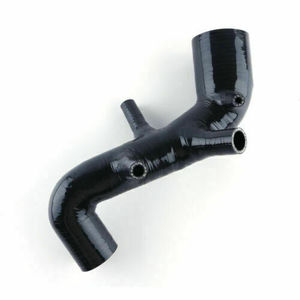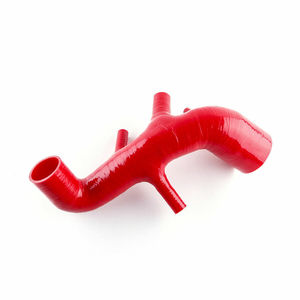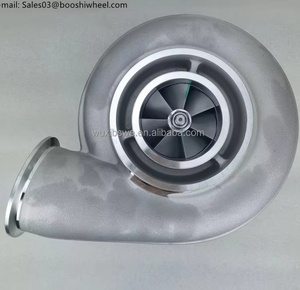(892 products available)





















































































































































































When it comes to turbochargers, there are many different sizes to choose from. One of the most common is the 80mm turbo. This size is often used in performance applications, where more power is needed from the engine. There are a few different types of 80 mm turbos, each with its advantages and disadvantages.
Single Turbo
Single 80 mm turbochargers are by far the most common type. They rely on one turbine and compressor wheel to generate boost for the engine. This setup is relatively simple and easy to maintain. It also makes for a more linear power band, which some drivers prefer. On the downside, single turbos can suffer from turbo lag, where boost doesn't kick in until higher engine speeds. They also have a limit to how much boost they can generate on their own.
Twin Turbo
Twin 80 mm turbos are less common but becoming more popular, especially in high-performance and enthusiast vehicles. As the name implies, this setup utilizes two turbochargers, either in parallel or staggered. Twin turbos can provide more low-end torque and a broader power band compared to singles. They also allow for more boost potential, as each turbo can handle a portion of the engine's airflow needs. The main drawbacks are increased complexity and cost, as well as slightly more weight from the additional components.
Variable Geometry Turbocharger (VGT)
Variable geometry 80 mm turbos are a more advanced option, although they are primarily found in diesel and heavy-duty applications. VGTs have adjustable vanes in the turbine housing that change shape based on engine speed and load. This design helps optimize boost across the entire RPM range, reducing turbo lag and improving efficiency. The tradeoff with VGTs is increased upfront cost and potentially more maintenance requirements over time.
Electric Turbo Compounds (ETC)
Electric turbo compounds are an emerging technology being developed for mainstream use. ETCs incorporate an electric motor into the turbocharger system to eliminate turbo lag almost entirely. By using electricity to spool the turbine, boost can be delivered instantly, regardless of engine speed. This provides a significant performance boost without compromising fuel efficiency. As with any new technology, the main concern with ETCs is long-term reliability and cost, although prices are expected to come down as the industry matures.
Regular Oil Changes
Oil changes are vital for turbo health. Follow the set schedule. Use high-quality oil recommended for the car. This oil keeps the engine running smoothly and protects parts from wear. It also helps the turbo get proper lubrication. Fresh oil flows through regularly, reducing friction and heat. This protects the moving pieces of the turbo. Heat and friction damage turbos over time. But good oil reduces these problems. Check the oil level too. Low oil harms the turbo. Top off if needed between changes. Use only the type specified in the owner's manual. Don't use low quality or cheap imitations. This could damage the turbo over time.
Cooling Down Practices
Cooling down the turbo is important after hard driving. Wait a few minutes before turning off the car. The coolant temp gauge should be monitored. This lets the turbo cool gradually. Stopping suddenly can crack parts. Heat stress occurs if the turbo is turned off too quickly. Idling for a bit allows the temp to drop slowly. It protects the turbo.
Air Filter Maintenance
Maintaining the air intake system is crucial. Clean the air filter regularly. A dirty filter restricts airflow. Dust and debris then enter the turbo. This can damage it over time. Inspect the intake pipes too. Look for cracks or leaks. These cause less air to reach the turbo. Pipes should be in good condition.
Wastegate Inspection
The wastegate regulates boost levels. Ensure it functions correctly. A faulty wastegate causes under or overboosting. This puts strain on the engine and turbo. Check the wastegate actuator for issues. It should open and close smoothly.
Wheel Cleaning
Cleaning the turbocharger wheels is important for optimal performance. Over time, carbon buildup and dirt can accumulate on the wheels, hindering their efficiency. Use a soft brush or cloth to gently remove any debris or residue from the turbocharger wheels. This ensures that the wheels spin freely and maintain proper airflow, maximizing the turbo's boosting capabilities.
Choosing the right 80mm turbo for a specific purpose can be a daunting task, but it doesn't have to be. By taking some factors into consideration, the process can be simplified. Here are some tips to help choose the right 80mm turbocharged vehicles:
Replacing an 80mm turbo is a complex process that requires a good understanding of vehicle mechanics, as well as the right tools for the job. Here is a step-by-step guide on how to replace an 80mm turbocharger:
Tools Needed:
Step-by-Step Guide:
Q1: What is the difference between an 80mm turbo and other turbo sizes?
A1: The size of the turbocharger influences its performance characteristics. An 80mm turbo, being larger, is likely to support higher horsepower compared to smaller turbos. However, it may also introduce turbo lag, making it less responsive at lower RPMs. This trade-off is what distinguishes the 80mm turbo from other sizes.
Q2: Can one put an 80mm turbo on any engine?
A2: Not every engine is suitable for an 80mm turbo. It is primarily suited for high-displacement engines (over 3.0 liters) or modified engines. Such engines can take full advantage of the 80mm turbo's airflow capabilities and handle the increased boost pressure effectively.
Q3: What is the expected lifespan of an 80mm turbo?
A3: The longevity of the 80mm turbo can vary based on usage, maintenance, and quality. Generally, turbos can last between 100,000 to 150,000 miles. Proper oil changes, using the correct oil, and timely maintenance can help achieve the expected turbo lifespan.
Q4: Is an 80mm turbo suitable for everyday driving?
A4: An 80mm turbo can be used for regular driving, but there are some things to consider. The larger turbo may reduce fuel efficiency at low RPMs and increase turbo lag. It will also make the car more powerful and exciting to drive. Overall, an 80mm turbo can be suitable for daily driving.
Q5: Can an 80mm turbo be used on a naturally aspirated engine?
A5: Yes, an 80mm turbo can be fitted onto a naturally aspirated engine. However, it will require significant modifications to the intake, exhaust, and engine management system. Additionally, the naturally aspirated engine may not perform efficiently with such a large turbo without proper tuning and airflow considerations.